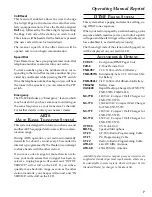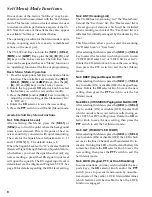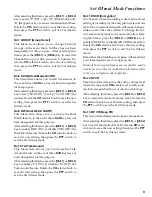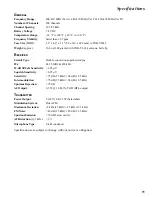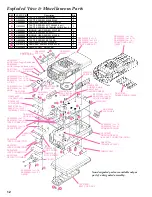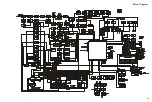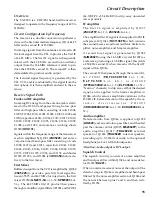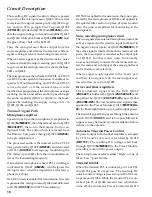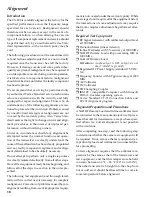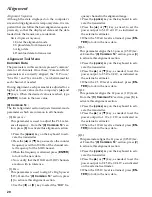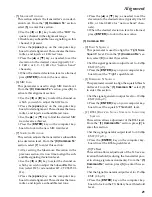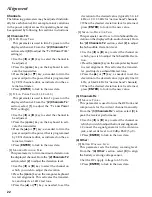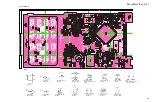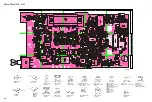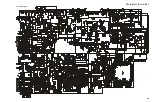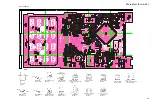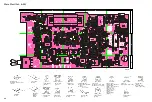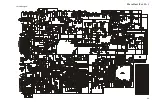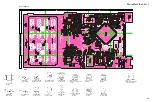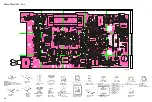
21
Alignment
- [5] M
AXIMUM
D
EVIATION
This section adjusts the transmitter’s voice devi-
ation level. From the “
(0) Common Tx
” section,
select [
5
] to enter this section.
• Use the [
W
] or [
X
] key to select the "
MID
" fre-
quency channel in the alignment range.
• Disable any subaudible tone signalling on this
channel, if present.
• Press the [
space
] key on the computer key-
board to start alignment. This activates the trans-
mitter, and injects a 1 kHz test tone.
• Press the [
S
] or [
T
] key, as needed, to set the
deviation to the desired value (typically 3.9 ~
4.2 kHz, or 2.0 ~ 2.3 kHz for “narrow band”
channels).
• When the desired deviation level is attained,
press [
ENTER
] to lock in the new value.
- [6] MIC G
AIN
This parameter is used to align MIC Gain level.
From the "
(0) Common Tx
" section, press [
6
] to
activate this alignment section.
• Use the [
W
] or [
X
] key to select the channel on
which you wish to adjust the MIC Gain.
• Press the [
space
] key on the computer key-
board to start alignment. This activates the trans-
mitter, and injects a subaudible test tone.
• Use the [
S
] or [
T
] key to find the desired MIC
Gain level is achieved.
• Press the [
ENTER
] key on the computer key-
board to lock in the new MIC Gain level.
- [7] S
UB
A
UDIO
D
EVIATION
This section adjusts the transmitter’s subaudible
tone deviation level. From the "
(0) Common Tx
"
section, select [
7
] to enter this section.
• After setting the Maximum Deviation in the
previous section, it is now time to align the sub-
audible signaling deviation level.
• Use the [
W
] or [
X
] key to select the channel on
which you wish to adjust the Subaudible Devia-
tion (select DCS code number 627, CTCSS 250.3
Hz).
• Press the [
space
] key on the computer key-
board to start alignment. This activates the trans-
mitter, and injects a subaudible test tone.
• Press the [
S
] or [
T
] key, as needed, to set the
deviation to the desired value (typically 0.6±0.2
kHz, or 0.4±0.2 kHz for “narrow band” chan-
nels).
• When the desired deviation level is attained,
press [
ENTER
] to lock in the new value.
(1) Common RX :
- [0] T
IGHT
N S
QUELCH
This parameter is used to align the "
Tight Noise
Squelch
" level. From the "
(1) Common Rx
" sec-
tion, select [
0
] to enter this section.
• Set the signal generator output level to –0dBµ
EMF (0.5 µV).
• Press the [
ENTER
] key on your computer key-
board to set the “
Tight
” squelch level.
- [1] T
HRESHOLD
N S
QUELCH
This parameter is used to align the squelch thresh-
old level. From the “
(1) Common Rx
” select [
1
]
to enter this section.
• Set the signal generator output level to –10 dBµ
EMF (0.16 µV).
• Press the [
ENTER
] key on your computer key-
board to set the squelch “
Threshold
” level.
- [2] RSSI (R
ECEIVED
S
IGNAL
S
TRENGTH
I
NDICATOR
)
S
QUELCH
This section allows adjustment of the RSSI level.
From the “
(1) Common Rx
” section, press [
2
] to
enter this section.
• Set the signal generator output level to +3.0 dBµ
EMF ( 0.7 µV ).
• Press the [
ENTER
] key on the computer key-
board to set the RSSI squelch level.
- [3] T
X
S
AVE
This section allows adjustment of the Tx Save ac-
tivation threshold (reducing the transmitter pow-
er in strong-signal environments). From the “
(1)
Common Rx
” section, press [
3
] to enter this sec-
tion.
• Set the Signal Generator output level to +15 dBµ
EMF ( 2.8 µV).
• Press the [
ENTER
] key on the computer key-
board to lock in the TX Battery Saver threshold
level.
Содержание VX-800
Страница 10: ...10 Set Menu Mode Functions Note ...
Страница 13: ...13 Block Diagram ...
Страница 14: ...14 Note Block Diagram ...
Страница 24: ...24 Note ...
Страница 26: ...26 Main Unit Lot 1 3 Note ...
Страница 29: ...29 Main Unit Lot 4 50 Circuit Diagram ...
Страница 30: ...30 Main Unit Lot 4 50 Note ...
Страница 33: ...33 Main Unit Lot 51 Circuit Diagram ...
Страница 34: ...34 Main Unit Lot 51 Note ...

